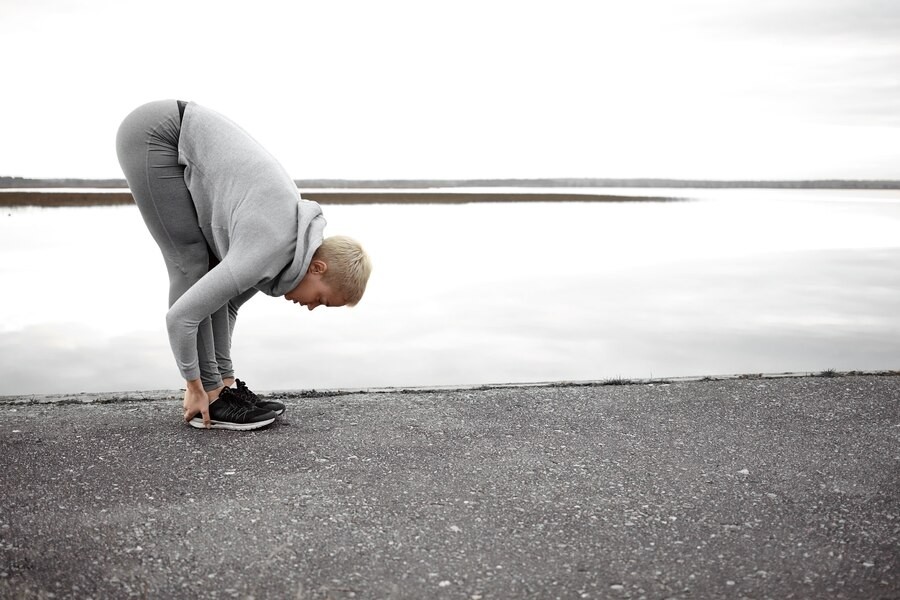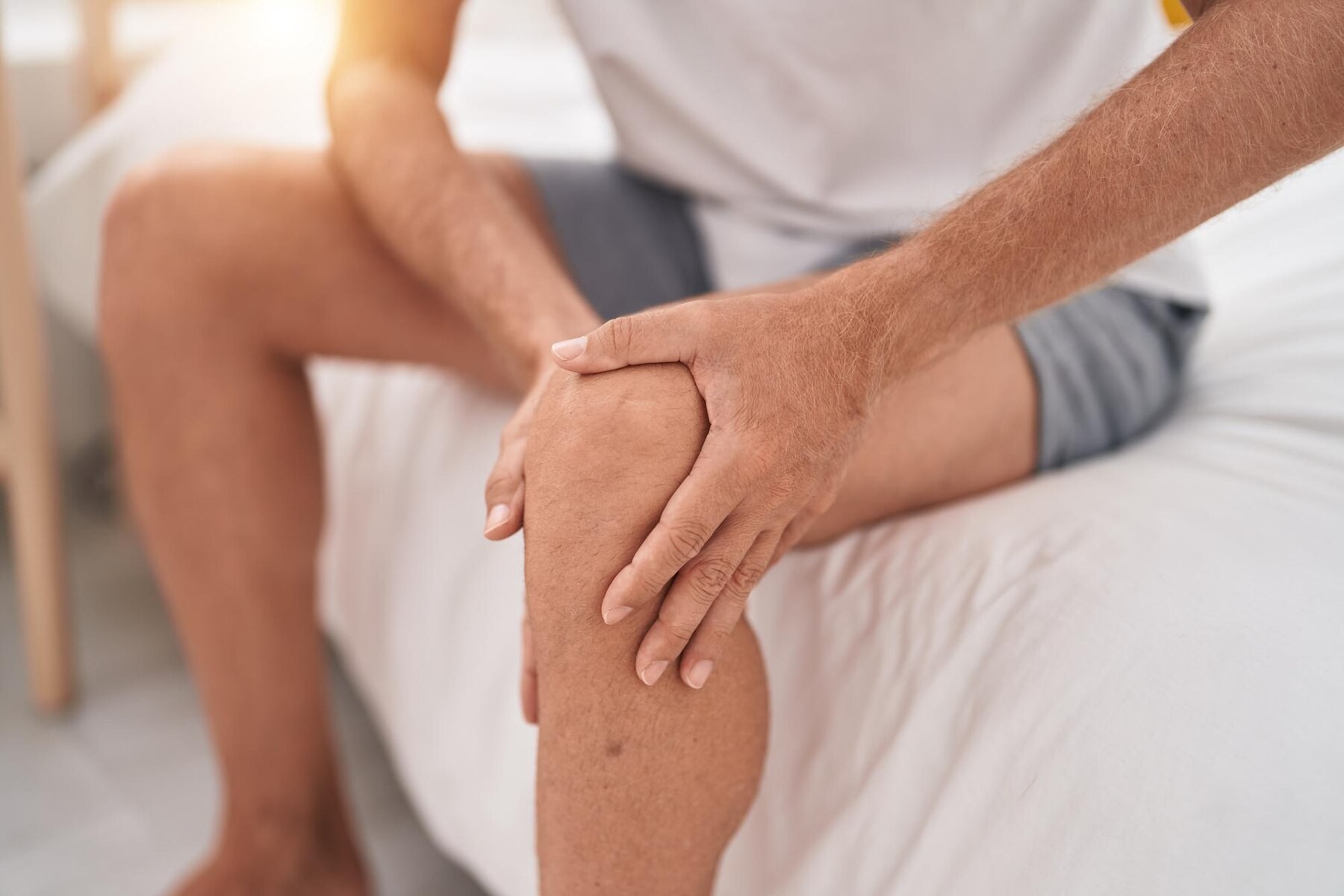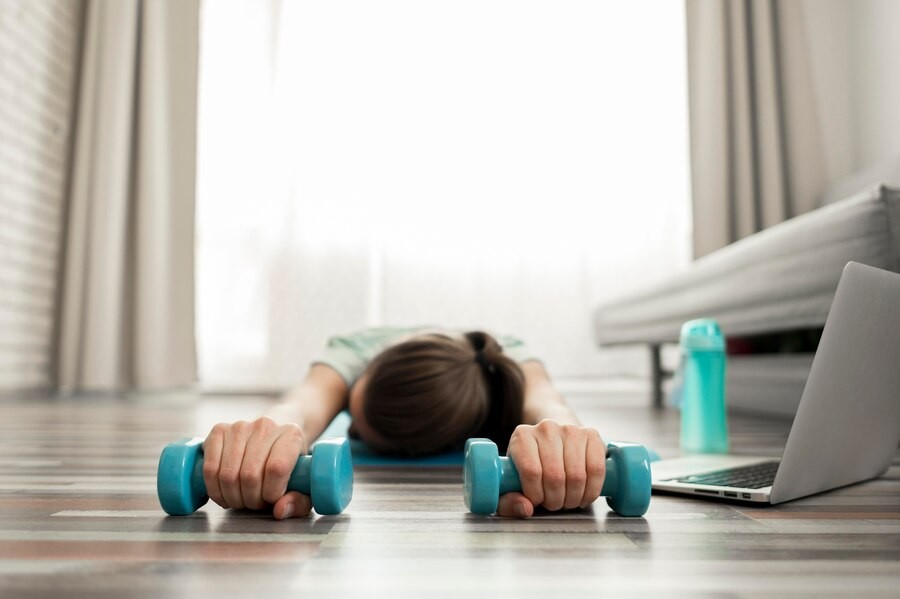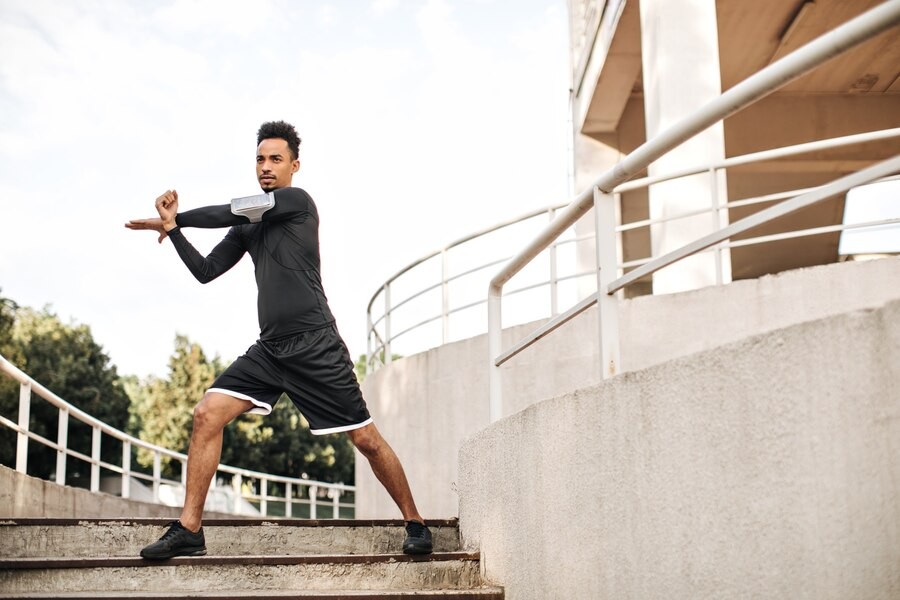Sebagian orang memilih berolahraga tanpa menggunakan alas kaki, termasuk olahraga Pound Fit. Meskipun berlatih bertelanjang kaki bisa memberikan beberapa manfaat seperti meningkatkan kekuatan kaki dan keseimbangan, namun dalam beberapa kasus, berolahraga dinilai lebih aman dengan tetap menggunakan sepatu.
Ketahui risiko apa saja yang mungkin terjadi saat bertelanjang kaki dalam olahraga Pound Fit.
Risiko Cedera saat Bertelanjang Kaki dalam Pound Fit
Dalam beberapa tahun terakhir, ada tren di kalangan pecinta kebugaran untuk berolahraga bertelanjang kaki, termasuk dalam latihan seperti Pound Fit. Namun, berlatih Pound Fit tanpa sepatu dapat meningkatkan risiko cedera tumit.
Pound Fit melibatkan banyak gerakan berirama dan melompat. Risiko cedera tumit atau nyeri lebih mungkin terjadi terutama jika teknik atau postur yang digunakan tidak benar, atau sudah pernah mengalami cedera tumit sebelumnya.
Berlatih Pound Fit tanpa sepatu dapat meningkatkan risiko cedera tumit karena beberapa alasan, di antaranya:
Berkurangnya dukungan bagi kaki
Sepatu olahraga dirancang untuk memberikan dukungan dan meredam tekanan. Bertelanjang kaki berarti kehilangan perlindungan ini, yang dapat meningkatkan tekanan pada tumit saat melakukan gerakan melompat dan berdiri dengan cepat.
Baca Juga: Amankah Olahraga Pound Fit untuk Penderita Penyakit Jantung?
Permukaan yang keras
Banyak kelas Pound Fit dilakukan di lantai studio yang keras. Jika Anda tidak menggunakan matras olahraga, bertelanjang kaki bisa meningkatkan risiko terjadinya cedera tumit.
Teknik yang salah
Tanpa penggunaan sepatu, Anda mungkin cenderung mengubah cara melangkah dan mendarat. Teknik yang buruk ini dapat meningkatkan risiko cedera.
Kapan Sebaiknya Menggunakan Sepatu?
Meskipun berlatih bertelanjang kaki bisa memberikan beberapa manfaat seperti meningkatkan kekuatan kaki dan keseimbangan. Namun, dalam beberapa kasus penggunaan sepatu dinilai lebih aman, terutama jika Anda memiliki masalah atau cedera tumit sebelumnya.
Baca Juga: Tak Hanya Bikin Langsing, Inilah Manfaat Olahraga Pound Fit bagi Tubuh
Anda tetap perlu menggunakan sepatu saat berolahraga dalam kondisi berikut ini:
- Jika memiliki cedera atau masalah kaki sebelumnya seperti plantar fasciitis, achilles tendinitis, atau masalah tulang lainnya.
- Jika melakukan aktivitas high impact seperti lari, aerobik, atau olahraga dengan banyak lompatan dan gerakan mendadak. Sepatu dengan bantalan yang baik dapat membantu meredam guncangan dan melindungi kaki.
- Jika berolahraga di permukaan yang kasar, tidak rata dan berpotensi bahaya seperti jalan berbatu, lantai berpasir atau area dengan puing-puing.
- Jika memiliki kondisi seperti kaki datar (pes planus).
- Jika melakukan olahraga seperti angkat beban. Sepatu yang stabil dan berpermukaan datar dapat membantu menjaga keseimbangan dan mengurangi risiko cedera.
Dengan mempertimbangkan faktor-faktor di atas, Anda bisa memutuskan kapan sebaiknya berlatih dengan bertelanjang kaki atau menggunakan sepatu. Apabila Anda memiliki keluhan seperti nyeri di area tumit atau pembengkakan di tumit setelah berolahraga, sebaiknya berkonsultasi dengan dokter.
Manfaatkan layanan konsultasi kesehatan bersama dokter kami di aplikasi Ai Care yang bisa diunduh melalui App Store atau Play Store.
Mau tahu tips dan trik kesehatan, pertolongan pertama, dan home remedies lainnya? Cek di sini, ya!
- dr Nadia Opmalina
Lori M. King, Ph.D (2024). What Is Plantar Fasciitis?. Available from: https://www.webmd.com/fitness-exercise/understanding-plantar-fasciitis-basics
Cleveland Clinic (2022). Plantar Fasciitis. Available from: https://my.clevelandclinic.org/health/diseases/14709-plantar-fasciitis
Poundfit. About. Available from: https://poundfit.com/about/
Poundfit. The Pound Beat. Available from: https://poundfit.com/poundfit_blog/teaching-the-four-positions/
Lauren David (2023). Working Out Barefoot: Pros and Cons. Available from: https://www.verywellfit.com/working-out-barefoot-6834637
Julia Ries (2023). Should You Start Working Out Barefoot? Experts Discuss the Pros and Cons. Available from: https://www.health.com/should-you-exercise-barefoot-7501429












